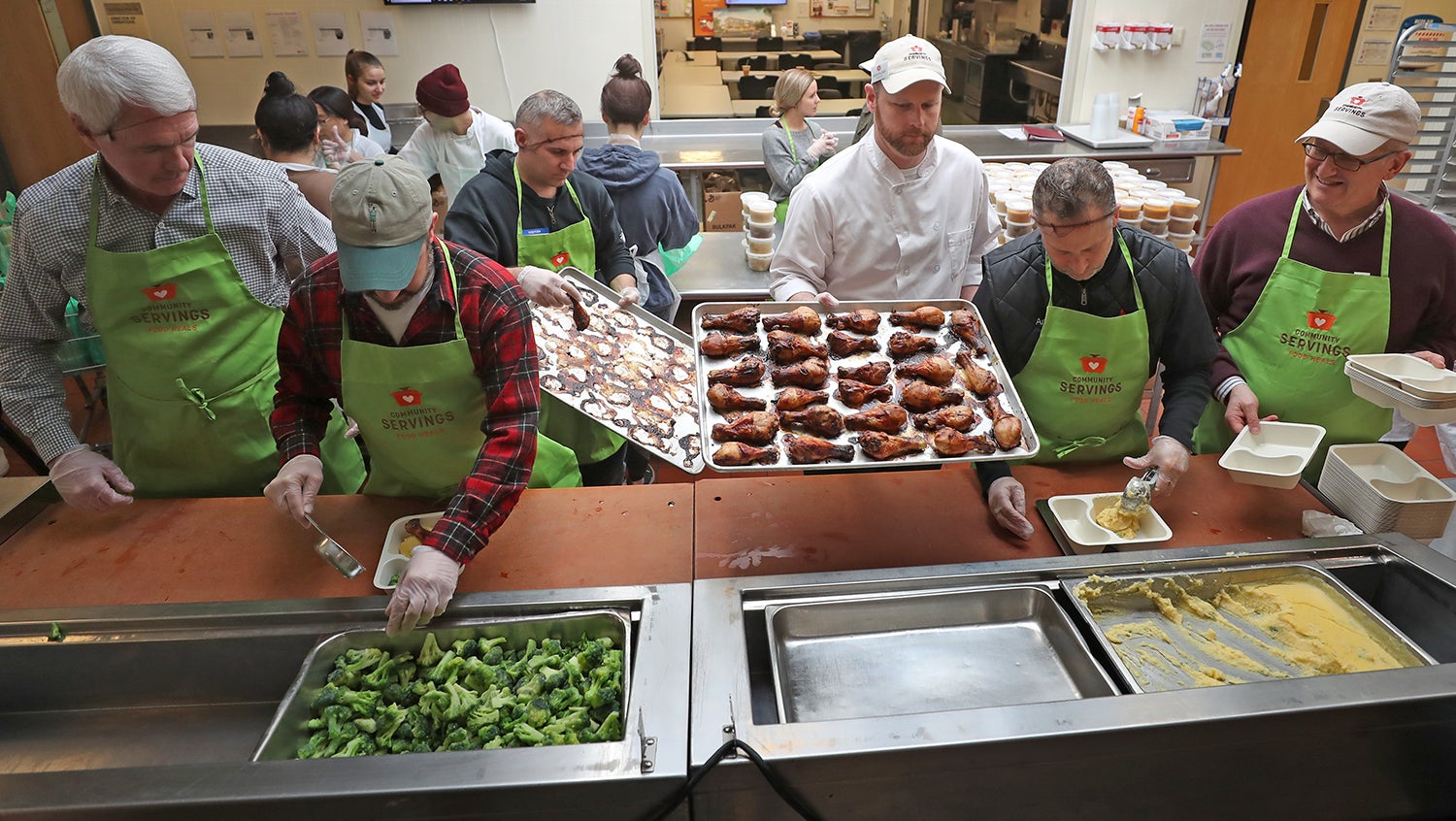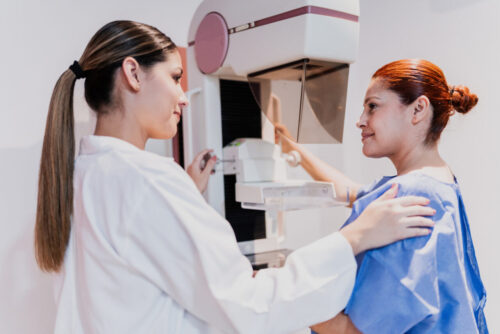Community Servings' David Waters: Nutrition Is a Healthcare Intervention Itself
October 17, 2019

Getty Images
The CEO of Community Servings discusses the evolution of medically tailored meals and the value of food-based intervention in addressing complex medical needs.
The ingredients at Community Servings, a Boston-based community nutrition nonprofit, resemble those of a high-end restaurant: locally sourced day boat scallops, garden-grown rosemary and Italian basil, rainbow-hued seasonal vegetables. The organization’s emphasis on variety and quality of foods is both intentional and essential. Community Servings’ clients are chronically ill, managing conditions like HIV, heart disease, and diabetes.
The meals, tailored to patients’ needs by registered dietitian nutritionists, are intended not just as a source of daily nutrition, but as medicine to bolster long-term health outcomes for clients too ill to prepare or purchase food themselves. Over 90% of Community Servings’ medically tailored meal participants live in poverty, and over 70% contend with several comorbidities, making challenges out of both food access and disease management.
Established in 1990 at the height of the HIV epidemic, Community Servings began as a meal delivery program offering hot meals to residents with HIV/AIDS in the Dorchester and Roxbury neighborhoods of Boston. Today, the group offers an array of programs: nutrition education, job training, and community supported agriculture (CSA) partnerships. Its core initiative, however, remains its medically tailored meals program.
What began as a local initiative is now part of a national movement, with the concept of medically tailored meals gaining traction across the United States. Community Servings is part of the Food is Medicine Coalition, a long-standing advocacy group comprised of two dozen community nutrition organizations across the United States. Research from the coalition is beginning to tell another story, that intervention at the food level may decrease hospital admissions in addition to improving health outcomes.
David Waters, CEO, has been working with Community Servings for over three decades, starting as a program volunteer drawn to the original mission of helping to feed patients during the HIV epidemic. Since he began leading the organization in 1999, Waters has expanded Community Servings from a local meal program to a robust regional nutrition network with over 50,000 volunteers, delivering food from 15 different medical diets to clients in over 21 cities and towns across Massachusetts.
Waters spoke with HealthCity, offering his insights into social determinants of health and the value of food-based intervention in addressing complex medical needs.
HealthCity: The Community Servings model has evolved over the years. How did the hot meal delivery program serving patients with HIV give rise to medically tailored meals?
David Waters: When we were first founded, feeding 30 people a day with HIV, there were no medicines available. The majority of patients were dying of malnutrition, of what’s called AIDS wasting syndrome. Getting them hot meals was about giving them the calories necessary to stave off muscle loss.
As we evolved, we realized that patients needed two things: appetizing food — because they were sick and had no appetite — and specific meals to their particular conditions — because they didn’t just have HIV. They had HIV and diabetes, or HIV and heart disease, and they were taking particular medications within the HIV regimen that were impacting them differently. That’s really how the concept of medically tailored meals grew up — realizing that different people need different kinds of meals.
HC: What distinguishes medically tailored meals from other meal delivery programs?
DW: Other meal delivery programs focus mostly on getting clients healthy, delicious nutrients. Programs like Meals on Wheels play a really important role, particularly for seniors who donât have the resources to get out and shop. But they are not generally focused on the complexity of the comorbidities that our patients cope with.
For the people we serve, the biggest challenge is not just food or hunger; it’s the complexity of their dietary requirements. If patients have diabetes that’s led to kidney failure, they need to be preparing meals that are focused on glucose, potassium, phosphorus. Who among us could walk to the grocery store today and plan a diet based on those things?

HC: Why does cultural relevance inform Community Servings’ approach to nutrition?
DW: The first hurdle Community Servings has to overcome is people have to eat our meals to benefit from them. They’re already nauseous and depressed from treatments or bad news in the healthcare realm. So if we bring mediocre food, they’re not going to eat it. We have to bring beautiful food, and for us that means scratch-made meals from local produce and fresh ingredients. The culturally appropriate piece is another component of that goal.
We look at the populations we serve, which are primarily communities of color, and look for recipes from those cultures: Haitian, African American, Latino, etc. Our chefs come from those same ethnic backgrounds, and we encourage them to bring recipes from home. We will figure out how to tailor those dishes to particular medical needs.
If we can bring meals that remind you of what your grandmother made, then it can not only motivate you to eat, but it also sends a really powerful emotional message around safety and security at a time when you feel very unsafe.
If we can bring meals that remind you of what your grandmother made, then it can not only motivate you to eat, but it also sends a really powerful emotional message around safety and security at a time when you feel very unsafe.
HC: How does a tailored meal program help to untangle some of the medical and social barriers that lead to poorer health or costly interventions among the people you serve?
DW: One example that comes to mind is a young woman who had many health issues and very advanced diabetes. She was a SNAP recipient, but her resources ended after she used her SNAP benefits up before the end of the month. She would be forced to eat what she could access with very limited income, which tended to be highly processed foods with a lot of sodium that would cause her diabetes to become destabilized. Her coping strategy was to pick up the phone and call 911. The ambulance would pick her up and take her to the emergency room. The emergency room would stabilize her, get her blood sugars under control, and send her home. She would do this every month.
Well, ambulance usage is very expensive. ER visits are even more expensive, so she was becoming what we call a high-cost patient, purely because she didn’t have access to the right foods to manage her illness. When she got involved with our program, she didn’t call 911 once in the first six months.
HC: Among all the talk of social determinants, do you think the relationship between food access and health is gaining the attention it deserves?
DW: I think it’s fascinating what has happened over the last two or three years in the context of social determinants and looking at things maybe only one step outside of traditional healthcare. Nutrition sits within the context of social determinants in that it’s an antihunger program. But when you look at managing complex diets and cross-prescribing meals to fit various medical conditions, it’s really a healthcare intervention itself, particularly when you weave in nutritional counseling and nutrition education.
In studies published in both Health Affairs and JAMA Internal Medicine, we’ve been able to document a 16% healthcare cost savings for patients that we’ve fed. It’s not cost-effective for a broad population, necessarily, but for a high-cost, high-need patient among the top 2% or 3% of expensive patients, it could be a really valuable intervention. More research needs to be done, and we’re continuing to work on it.
HC: Community Servings is involved with a number of advocacy projects. What prompted that move from service to advocacy as well, and why do you see it as so important?
DW: HIV was unique in that patients were generally offered a holistic range of services — housing, case management, legal services, transportation, medically tailored meals — unlike any other disease group. We don’t have that for breast cancer or diabetes. On some level, our responsibility is to take that innovative model, where we recognize that only a small portion of someone’s health is what medicines they’re taking or how often they go to the doctor, to a broader audience.
Over our 30 years of feeding chronically ill patients, we’ve defined a very specific intervention for people who can’t manage complex diets on their own. As the agency matures, we recognize the need to look beyond our own backyard and see how we can help to further the conversation, both regionally and federally, around the importance of food as medicine and medically tailored meals. Feeding low-income, sick populations has a direct impact not only on their life but also on their health outcomes. That is incredibly powerful, and I think there are opportunities going forward that could be transformative.


